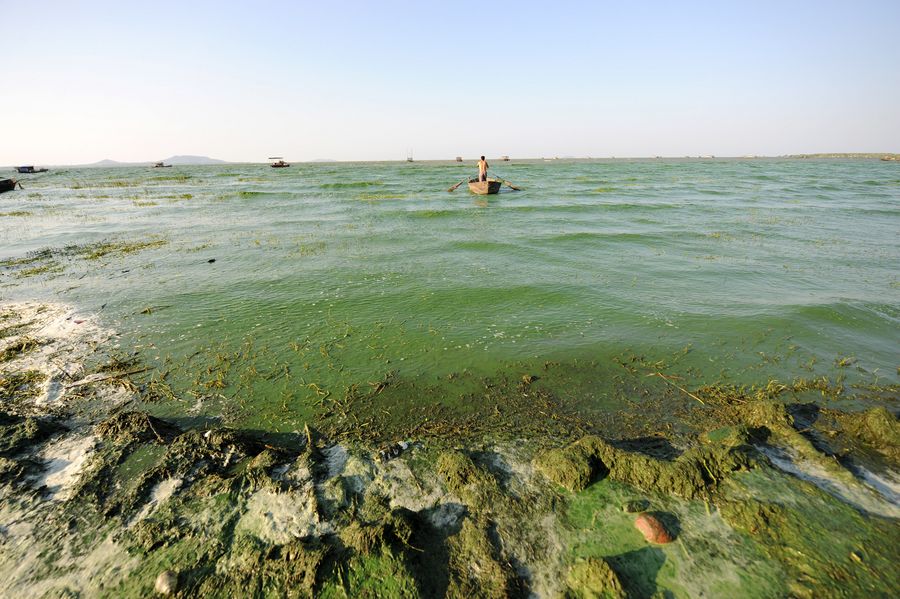
File photo shows a blue algae outbreak in Chaohu Lake, east China's Anhui province. (Xinhua)
Chinese researchers have isolated a long-tailed cyanophage called Mic1, a kind of virus which can specifically infect the blue algae and thus regulate the population density and seasonal fluctuation of the algal bloom.
BEIJING, Aug. 20 (Xinhua) -- Chinese researchers have found the mechanism of blue algae's natural enemy in the Chaohu Lake, China's fifth-largest freshwater lake in east China's Anhui province, according to a recently published study in the journal Structure.
The research team from the University of Science and Technology of China (USTC) has isolated a long-tailed cyanophage called Mic1, a kind of virus which can specifically infect the blue algae and thus regulate the population density and seasonal fluctuation of the algal bloom.
The Mic1 is considered as a potentially effective biological means to control the algal bloom. Its head measures around 88 nanometers and has a 400-nanometer long tail.
Researchers have analyzed the assembly of Mic1's head, said the study. The results set up a platform to explore the mechanism of specific interactions and co-evolution between blue algae and cyanop. Chaohu Lake is suffering the serious problem of algal blooms. This research provides a potential and theoretical guidance for bloom control.



